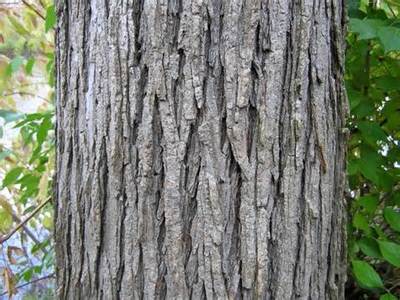Slippery Elm

Slippery Elm
Ulmus Rubra, Ulmus Fulva, Ulmus Ruba
Slippery Elm, Red Elm, Indian Elm, Moose Elm
Slippery Elm is a beautiful stately tree that can grow up to be 18-20
meters high, Family of the Ulmaceae. Slippery Elm is found in from
Central and North America. The outer bark is brown in color, but the
medicinal inner bark is whitish. The inner bark is abundant with
functional mucilage.
Mucilage (made up of Polysaccharides); Vitamin A, Vitamin B-complex, C,
K, Starch and Sugars, Calcium, Magnesium, Chromium, Selenium. Slippery
Elm has traces of the Mineral Iron, Phosphorus, Silicon, and Zinc,
Gallic Acids, Galactose, 3-Methyl Galactotose, Rhamnose, Galacturonic
Acid, Carbolic Acid (referred to as Tannins). The bark contains a
complex mixture of Polysaccharides including Pentoses, Methyl-Pentoses
and Hexoses that form a soothing gelatinous fiber or mucilage. The bark
also contains high concentrations of anti-oxidants including
Beta-Sitosterol, traces of Beta-Carotene and Flavonoids including
Proanthocyanidins.
- Soothing for the mucous membranes (demulcent and emollient)
- Mild astringent, Nutrient, Expectorant
- Stimulates excretion of urine (diuretic)
- Soothes the digestive system
- Protects the stomach and lessens inflammation
- Protects the mucous membranes of the digestive tract and lungs
- Regulates and supports intestinal flora
- Reduces stomach aches and excess gastric juice
- Stimulates the growth of new cells
- Vitalizes, invigorates
- Cleanses the organs, tissues, glands, and nerves of accumulated mucus and waste material
- Natural lubricant for the bones and joints
- Antibiotic and antibacterial properties
- Soothing and nerve-strengthening
Historically or traditionally known to help Support the Body's Function and physiology in dealing with:
- Irritation of inflammation mucous
membranes, for instance in the throat, gullet, mouth, lips, stomach,
intestines, urine passages, bladder, lungs (coughing, bronchitis),
vagina
- Infections and ulcers of the mucous
membranes of the stomach (gastritis), intestines (colitis), appendix,
gullet (esophagitis i.e. Esophagitis symptoms include difficult and
painful swallowing, heartburn, mouth sores feeling of something stuck in
the throat, nausea and vomiting.) rectum
- Digestive problems, diarrhea, dysentery
- Kidney stones, gravel
- Tissue damage through burns, wounds, operations etc.
- Infirmity, exhaustion
- Arthritic complaints
- Reinforcement of muscles and tissue.
Some people may be allergic to Slippery Elm
Although consulting a physician is always recommended, there are no
complications known of the use of slippery elm during pregnancy.
As early as in the 18th and 19th century, the inner bark of slippery elm
was very popular for its many variety of application. It was the most
frequently used herb for the relief of many complaints. The Indians used
slippery elm for many of the problems mentioned above. Because of its
high nutritional value, slippery elm is often used in dietary food for
the infirm or health challenged.
The inner bark of slippery elm is a slimy, fibrous substance naturally
accruing in the plant, which can also be found in its plant juices. A
decoction of slippery elm will also be slimy in substance once it has
cooled down.
Slippery Elm is a very valuable tree that has many traditional uses. The
Slippery Elm is a beautiful deciduous tree which can grow to 20 meters
in height. Slippery Elm bark helps soothe the digestive tract because it
contains large amounts of natural mucilage. This bark is especially
noted for soothing inflammatory irritation. It grows widely throughout
North America. In times of famine, early American settlers used it as a
survival food. The tree also was used by the Ojibwa to treat sore
throats. The fresh inner bark was boiled and the Dakota, Omaha-Ponca,
and other tribes drank the resulting decoction as a laxative. The
indigenous people taught some of these uses to early non-Indian settlers
Slippery Elm inner bark is very rich in
mucilage, a complex mixture of polysaccharides that form a soothing
gelatinous fiber when water is added. The pleasant tasting high fibre
'gruel' or porridge made by adding water to the bark was traditionally
used as both a food and a medicine by First Nations peoples, and later
by European colonists. The mucilage was traditionally used internally
for soothing sore throats and tonsillitis, coughs, dryness of the lungs
and digestive upsets, and other skin inflammations. The bark is
particularly recommended for soothing gastric issues. The viscous fiber
has several beneficial effects on digestion: 1) it reduces bowel transit
time; 2) it absorbs toxins from the bowel; 3) it increases fecal bulk
and dilutes stool materials thereby reducing stool contact with the
intestinal mucosa; and 4) it is extremely important for enhances
beneficial bacteria in the gut and provides an excellent substrate for
bacterial fermentation. Eliminating estrogenic anaerobes from the gut
can significantly help the body to regain critical hormone balances that
are required for basic health. The bark has noted anti-inflammatory
properties and because the mucilage resists hydrolysis and digestion by
stomachs acids and enzymes, it therefore maintains its soothing action
throughout the entire digestive system. Slippery elm bark mucilage also
helps to moisten the throat, nasal passages, and lungs. Slippery elm
bark was also traditionally used for treating abscesses, dysentery,
urinary conditions and fever.
|

